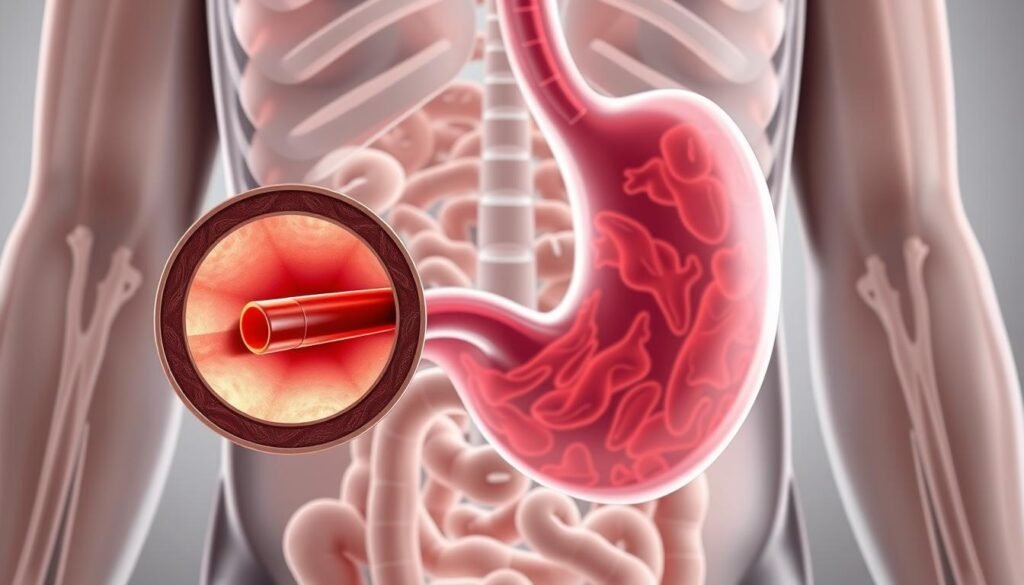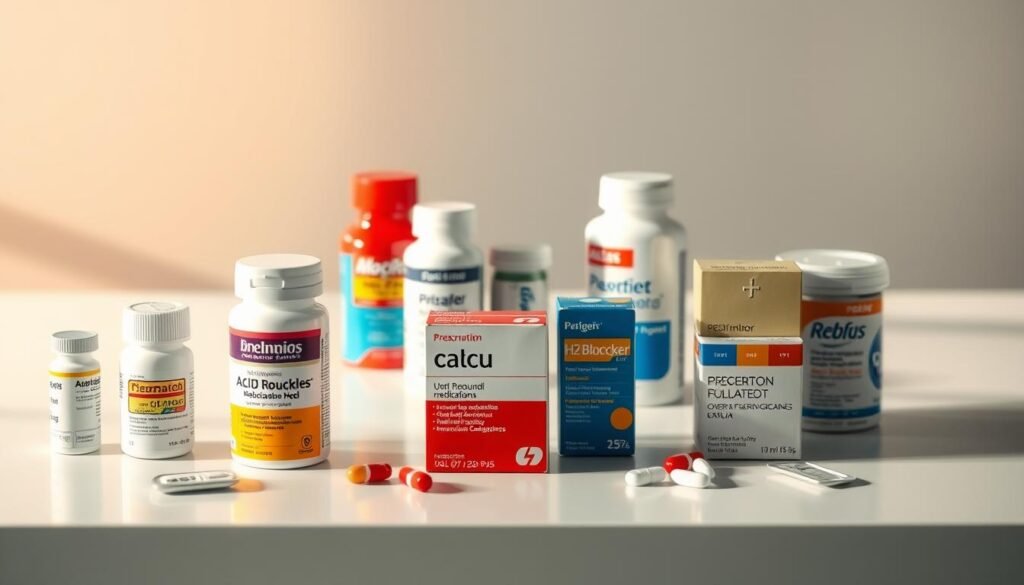Address
AVSSO 2242 SE 171st AVE Portland Oregon USA 97233
Work Hours
Monday to Friday: 7AM - 7PM
Weekend: 10AM - 5PM
Address
AVSSO 2242 SE 171st AVE Portland Oregon USA 97233
Work Hours
Monday to Friday: 7AM - 7PM
Weekend: 10AM - 5PM
GERD/LPR/SIBO sufferers! 30+ experts reveal root causes & science-backed solutions at Acid Reflux Relief Summit 2025. Free registration!

If you’re tired of the burning sensation in your chest, the constant throat clearing, and the frustration of temporary relief from acid reflux symptoms, you’re not alone. Over 60 million Americans suffer from acid reflux, GERD, or LPR (silent reflux), often stuck in a cycle of confusing diagnoses and ineffective treatments.
The 2025 Reflux Summit is your chance to break this cycle with expert insights from top gastroenterologists, functional medicine doctors, and nutritionists. Acid reflux occurs when stomach acid flows into the esophagus, causing heartburn and discomfort. Frequent episodes may indicate GERD, a condition affecting about 20% of Americans.
Acid reflux, often dismissed as a minor inconvenience, can be a symptom of a more serious underlying condition known as gastroesophageal reflux disease (GERD). This condition occurs when stomach acid flows back into the esophagus, causing irritation and discomfort.
During acid reflux, the lower esophageal sphincter (LES) fails to prevent stomach acid from flowing back into the esophagus. This backflow causes irritation and inflammation of the delicate esophageal lining, leading to discomfort and potentially serious complications.

Occasional acid reflux is common and often triggered by specific foods or activities. However, GERD represents a chronic condition requiring medical attention. It is diagnosed when acid reflux occurs more than twice weekly for several weeks, indicating a persistent problem with the digestive system.
The prevalence of GERD has increased dramatically in Western countries, now affecting approximately 20% of the population. Women account for about 60% of GERD cases, suggesting potential hormonal influences on the condition. Understanding the difference between normal reflux and GERD is crucial for proper treatment and preventing long-term complications.
| Condition | Frequency | Complications |
|---|---|---|
| Occasional Acid Reflux | Less than twice a week | Minimal |
| GERD | More than twice a week | Potential for serious esophageal damage |
Millions of people worldwide struggle with acid reflux symptoms daily, affecting their quality of life. These symptoms can vary in severity and impact daily activities. Understanding the common symptoms is crucial for seeking appropriate treatment.
The classic symptom of acid reflux is heartburn, a burning sensation that typically starts behind the breastbone and may travel up toward the throat. Many sufferers also experience regurgitation, where stomach contents, including acid, flow back into the mouth, creating a sour or bitter taste.
Silent reflux or Laryngopharyngeal Reflux (LPR) presents differently, with symptoms like chronic throat clearing, post-nasal drip, and voice changes without the typical heartburn. LPR is particularly troublesome because many patients and doctors miss the connection to acid reflux, leading to delayed diagnosis and treatment.
Warning signs that require immediate medical attention include severe chest pain, difficulty breathing, and pain that radiates to the jaw, neck, or arm. Symptoms often worsen after large meals, when lying down, or after consuming trigger foods like coffee, chocolate, or spicy dishes.
| Symptom | Description | Triggers to Avoid |
|---|---|---|
| Heartburn | Burning sensation behind the breastbone | Fatty meals, lying down |
| Regurgitation | Sour or bitter taste in the mouth | Large meals, bending over |
| Silent Reflux (LPR) | Chronic throat clearing, voice changes | Coffee, chocolate, spicy foods |

With our 60-day money-back guarantee, you can experience the summit completely worry-free. If you don’t find solutions for your reflux, we’ll refund every penny. Join now and start your healing journey today!
Contrary to popular belief, acid reflux is not just about excess stomach acid; there are several underlying factors at play. To understand acid reflux, it’s essential to look at the functioning of the lower esophageal sphincter (LES), a circular muscle that opens when you swallow and then closes again to keep substances in your stomach. When this mechanism fails, acid can flow back into the esophagus, causing discomfort.
Many cases of acid reflux involve normal or even low acid levels, with the issue being more about the improper functioning of the digestive system. The LES plays a crucial role in this condition, as its weakening or inappropriate relaxation allows stomach contents to flow backward into the esophagus. Understanding this mechanism is key to addressing the root cause of the problem.

Several physical factors can contribute to acid reflux. A hiatal hernia occurs when part of the stomach pushes through the diaphragm, disrupting the normal barrier function. Obesity increases intra-abdominal pressure, forcing stomach contents upward and straining the LES. Pregnancy is another common trigger due to hormonal changes that relax the LES and increased pressure from the growing uterus.
Lifestyle choices significantly impact reflux. Dietary choices, such as consuming foods that are fatty, chocolate, coffee, alcohol, or spicy, can relax the LES and trigger acid reflux. Additionally, the timing and size of meals matter; eating large meals or lying down shortly after eating increases the risk of reflux episodes. Managing these factors can help alleviate symptoms.
The treatment of acid reflux involves a complex landscape of medications, each with its own strengths and weaknesses. For individuals suffering from acid reflux, understanding the various medication options is crucial for effective management.
Medications for acid reflux fall into three primary categories: antacids that neutralize stomach acid, H2 blockers that reduce acid production, and proton pump inhibitors (PPIs) that block acid production more comprehensively. Over-the-counter antacids like Tums, Rolaids, and Maalox provide quick relief by neutralizing stomach acid, making them suitable for occasional symptoms.

While PPIs are effective, long-term use has been associated with serious side effects, including nutrient deficiencies and an increased risk of bone fractures. Many patients become dependent on PPIs, experiencing severe rebound hyperacidity when attempting to discontinue them.
Tapering off medications requires a gradual approach, often involving stepping down to lower doses or switching to less potent medications like H2 blockers. Working with a healthcare provider to develop a tapering schedule is crucial to minimize rebound symptoms and ensure safety. Incorporating dietary changes and stress management can support the medication tapering process.
Dietary adjustments are essential for reducing the frequency and severity of acid reflux episodes. By making informed choices about what we eat, we can significantly alleviate symptoms of acid reflux and improve our overall digestive health.

Certain foods are known to trigger acid reflux by relaxing the lower esophageal sphincter or increasing stomach acid production. Common culprits include fatty and fried foods, spicy dishes, and citrus fruits. Other trigger foods are tomato-based products, chocolate, and carbonated beverages. It’s crucial to identify and limit these foods to manage symptoms effectively.
Incorporating the right foods into our diet can help soothe the digestive system and reduce acid reflux symptoms. Ginger and oatmeal are known for their soothing effects on the stomach. Non-citrus fruits, lean proteins, and vegetables like asparagus, broccoli, and cauliflower are also beneficial. These foods help balance stomach acid and promote a healthier digestive environment.
For some individuals, adopting a FODMAP approach or practicing food combining techniques may provide additional relief. The FODMAP diet involves limiting fermentable carbohydrates, which can be beneficial for those who experience IBS-like symptoms alongside acid reflux. Food combining focuses on not mixing certain food groups to simplify digestion and reduce reflux.
Keeping a food diary can help identify personal trigger foods and monitor the effectiveness of dietary changes. Gradual adjustments tend to be more sustainable, allowing for better long-term management of acid reflux symptoms.
The surprising link between anxiety and acid reflux is a critical aspect of understanding this condition. Many people experience a significant worsening of their acid reflux symptoms during periods of high stress or anxiety. This is not merely coincidental; there’s a complex interplay between the gut and the brain that affects digestive health.

During periods of stress, the body enters “fight or flight” mode, diverting resources away from digestion and potentially increasing stomach acid production or altering esophageal muscle function. This can lead to an exacerbation of reflux symptoms, making heartburn more frequent and severe. Many people notice a clear pattern where their symptoms intensify during stressful life events or periods of heightened anxiety.
Fortunately, there are several stress management techniques that may help alleviate acid reflux symptoms. Mindfulness meditation has shown promising results by activating the parasympathetic “rest and digest” nervous system. Deep breathing exercises, particularly diaphragmatic breathing, can help reduce pressure on the stomach and calm the nervous system simultaneously. Regular physical activity, when done appropriately, helps regulate stress hormones and improves overall digestive function.
For some patients with chronic acid reflux, addressing underlying anxiety or depression through therapy or medication results in significant improvement of physical symptoms. Integrating mental health care into reflux treatment plans represents a more holistic approach that acknowledges the complex interplay between mind and body. By managing stress and anxiety levels, people can potentially reduce the frequency and severity of their reflux episodes over time.
The upcoming 2025 Reflux Summit promises to be a game-changer for those dealing with chronic acid reflux. This event brings together world-renowned experts in gastroenterology, functional medicine, nutrition, and mental health to provide a comprehensive understanding of acid reflux and GERD.

The summit boasts an impressive lineup of expert speakers, including leading researchers in digestive health and clinicians with decades of experience treating chronic acid reflux. You’ll hear from specialists who have dedicated their careers to understanding the complexities of reflux disease and developing effective treatment strategies.
The summit will cover groundbreaking topics that are rarely discussed in conventional medical settings. Some of the key sessions include:
To get the most out of the 2025 Reflux Summit, participants are encouraged to:
By following these tips, you’ll be able to maximize your learning experience and take away practical strategies for managing your acid reflux.
The path to overcoming chronic acid reflux begins with knowledge and empowerment. The 2025 Reflux Summit is your chance to cut through the confusion—with expert-led insights from top gastroenterologists, functional medicine doctors, and nutritionists.
Living with chronic acid reflux doesn’t have to be your permanent reality. By understanding the true root causes of your reflux, you can develop a personalized approach that addresses your unique digestive challenges. The journey to healing often requires a multi-faceted approach combining medical interventions, dietary modifications, lifestyle changes, and stress management techniques.
Many people who have suffered for years have found complete relief by implementing integrated strategies. The summit focuses on sustainable solutions that heal the digestive system and prevent recurrence of acid reflux. By registering now, you’ll join thousands of fellow reflux sufferers taking control of their digestive health. Start your path to lasting relief today.
